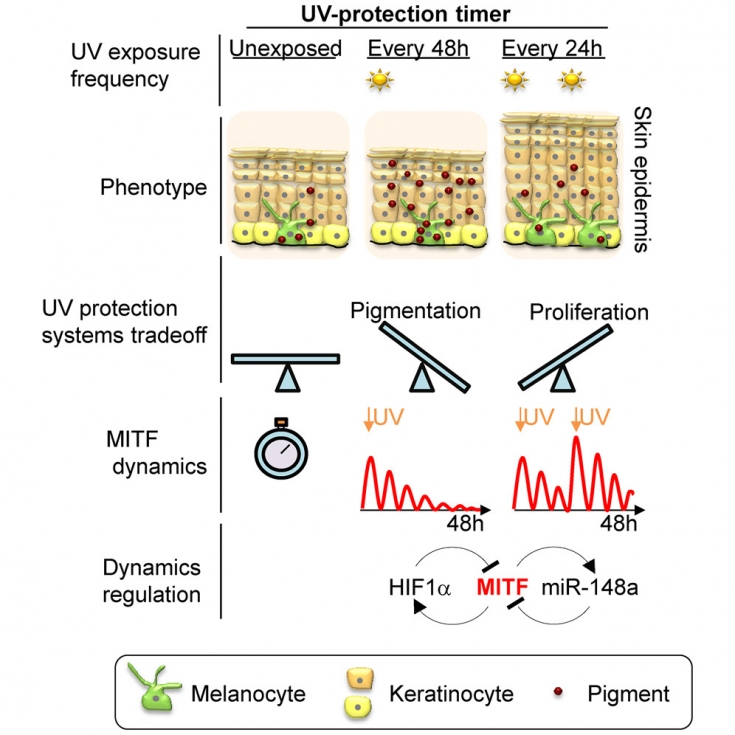Researchers have found that mouse and human skin cells produce melanin pigment in response to sunlight over a 48-hour cycle. They noticed that exposing the skin to ultraviolet light every two days produced darker pigmentation with less radiation damage than daily exposure.
In the article estet-portal.com you can read in detail the results of a study that can change our attitude to sunbathing and tanning culture, as well as provide new opportunities in skin cancer treatment.
UV influence on skin defense mechanisms and melanin pigment synthesis
"The damaging effects of high-dose UV rays are known, but we were curious to see the effect of frequency of exposure on the skin," says Carmit Levy, senior author, molecular geneticist at Tel Aviv University.
The skin reacts to UV radiation in two ways:
• firstly, by inflaming and triggering the immune response, repairing the radiation-induced DNA break and increasing the number of cells to protect the more sensitive layers of the skin;
• Secondly, by producing melanin pigment in the skin, eyes and hair.
Stress reactions to UV light begin within minutes, while melanin production can take hours or days.
Watch the most interesting videos on our Youtube channel
48-hour cycle of melanin pigment synthesis
Levi's team, led by Tel Aviv University PhD student Hagar Malkov-Brog, wanted to understand how the synchronization of the two skin protection programs relates to each other.
They exposed live mice to UV light every day, every other day, and every 3 days. Then the amount of melanin was measured using a color indicator and the number of proliferations in skin cells was counted.

They noted that a 48-hour exposure cycle resulted in the darkest coloration of cells while minimizing the effects of oxidative stress and reduced cell division.
MITF (transcription factor) appears to play a role in the synchronization of defense mechanisms. MITF has previously been shown to control melanin production. When exposed to UV light, MITF expression was found to fluctuate every 48 hours.
MITF oscillations are controlled by several negative regulatory loops, one at the transcriptional level involving HIF1α; and another posttranscriptional loop involving microRNA-148a.
MITF, serves to synchronize the proliferation and pigmentation reactions and also functions as a UV protection timer.
Clinical value of the study of melanin pigment synthesis
Levi's team then performed a comparable experiment in pigmented human cells derived from a cancer cell line. They directly stimulated MITF activity in cultured cells. As it turned out, the 48-hour stimulation cycle caused the greatest pigmentation in human cells, while minimizing stress-induced proliferation.
Vitamin D, which the skin produces when exposed to the sun, remains in the blood for 48 hours after exposure.
The team believes that understanding the dynamics of transcription factors can lead to a critical assessment of the correct treatment of skin cancer. However, the results must be replicated in human trials before any claims can be made about the therapeutic potential of the study or even about safer tanning habits.
Thank you for staying with estet-portal.com. Read other interesting articles in the "Dermatology" section. You may be interested in Fitzpatrick skin phototypes: methods for correcting pigmentation disorders







Add a comment